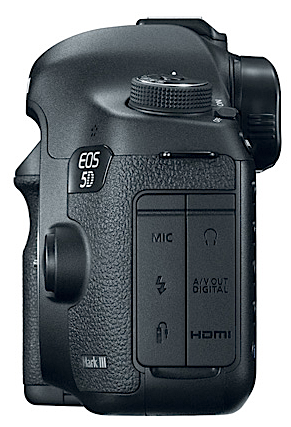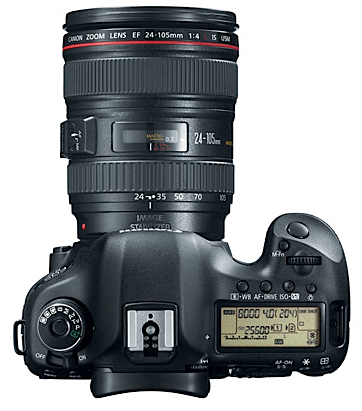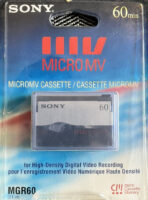It’s finally here- the successor to the full-frame DSLR that sparked the entire Video-DSLR revolution (or upheaval as many called it.) On Friday, March 2nd, Canon announced the 5D MarkIII with several notable improvements. But do these make this camera another game changer, or do they just refine what the 5D is in the market?

The Full Frame 5D is back for more in "Mark III"
Truth be told, that as the vDSLR movement grew and successors to the 5D came out, the competitive advantages of the 5D became less and less. Especially in recent months with the release of Nikon’s D4 and D800 series cameras. But the 5DmkIII brings Canon right back up to the bar in terms of capability. So “Cannonites” need not start to consider trying to jump ship to Nikon.
Several key features for videographers stand out:
- New sensor with 2-more stops of light gathering. Better for low light work. Better to let you close down a lens to get a deeper depth of field and keep focus easier. Reportedly smoother images.
- New DIGIC 5+ processor. Reportedly greatly diminishes the problematic moire and aliasing that plagues the 5DmkII.
- New compression choices. Including “All-I” frame compression where each frame is compressed individually- making for much easier editing because a given frame does not have to first decode the frames around it to be seen.
- Longer recording time. Now you can record up to 30 minutes (instead of 12 minutes on the mkII) and the camera will automatically break the video into 4 GB chunks on a FAT-32 formatted card, a process called “spanning.”
- A headphone jack. Now you can monitor the actual audio the camera is recording. Coupled with this…
- Better audio control while recording. 64 levels- adjustable before and during recording. Together, these two features greatly lessen the need for an external audio recorder for many projects.
- Better LCD screen. If you want to travel light (without an outboard monitor) the improved screen will help.
- HDMI out no longer drops resolution to SD when recording.

A headphone jack and better audio controls are notable improvements.
But several caveats still remain:
- No clean HDMI out. If you don’t use an external recorder, this isn’t an issue.
- Moire & aliasing. The PR says “significantly reducing” moire and color artifacts. It doesn’t say it has eliminated them.
- The 60 fps video is only 720p, finally reaching what HD camcorders have been doing for many years. This is still less than the new AVCHD spec of 1080p60.
- Timecode capability. It’s finally there, but given that so many workarounds already exist, it’s not much needed any more.
- CMOS “jello” remains. It’s a large sensor with lots of pixels so refreshing it faster is still a very hard thing to do.
- No “crop” modes like Nikon / Panasonic Lumix. These help with using different lenses and also let one lens act as two or three.
- It’s $3,500 without glass. So, if you really need that shallow depth of field, it’s a choice, but now you are clearly approaching the same cost of real, large sensor, video cameras. If the cost is the same, choose a video camera to do a video camera’s job.

Some improvements, but not a "game changer" because the game has changed around it.
If you are already heavily set up for 5D video, then swapping out the body and getting the new benefits is a no-brainer. If you are new to vDSLR work, then strongly consider a large-sensor camcorder- purpose built for shooting video, as opposed to a vDSLR.
|







This had me very interested till we got to the price – ouch! The question is what camcorders compare at the price point of most video DSLRs?
It’s an okay price for a high quality hybrid (stills & video) device. But as a professional video camera, it’s still pretty steep as this price includes no lens, no decent microphone, etc.
At this $3500 price, you can start getting a decent prosumer video camcorder that is properly suited to shooting video, for longer periods of time, with better audio & control, video measurement and assessment, easier direct access to control parameters, and a whole lot more.
The Canon XF100 is $2995 new.
The Canon XH-A1s $2649 new
The JVC HM150U is $2600 new.
The Panasonic AC130 is $3695 new.
The large sensor Sony NEX-VG20 is $1600 new.
There are even “pro” 3D camcorders from Panasonic, Sony, & JVC under $3300.
All of these have dedicated audio controls and XLR inputs, smooth servo zoom lenses, and enough depth of field that half your shots won’t be out of focus.